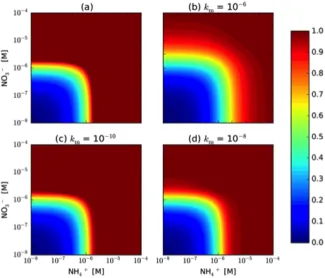Led by Guoping Tang (ORNL) and others, the new approach couples the reactive transport code PFLOTRAN to CLM. It replaces the original explicit time-stepping decomposition module, and retains the same coupled carbon-nitrogen mechanisms of the explicit scheme. The ability of the new approach to reproduce the dynamics of the original model is demonstrated in a recent article published in Geoscientific Model Development. A Monod relationship based on substrate availability is shown to reproduce CLMs “relative demand” assumption for plant-microbe competition under nutrient constraints at Arctic, temperate, and tropical sites, while allowing greater flexibility in specifying the dynamics of nutrient limitation. Several numerical challenges are identified and explored, with results that provide general guidance for future development and extension of this or other implicit time-stepping soil and plant biogeochemistry schemes. In particular, this work demonstrates robust operation at very low predicted concentrations of reactive species.
Reference:
Tang, G., F. Yuan, G. Bisht, G. E. Hammond, P. C. Lichtner, J. Kumar, R. T. Mills, X. Xu, B. Andre, F. M. Hoffman, S. L. Painter and P. E. Thornton 2016. Addressing numerical challenges in introducing a reactive transport code into a land surface model: a biogeochemical modeling proof-of-concept with CLM–PFLOTRAN 1.0. Geoscientific Model Development 9(3): 927-946 DOI: 10.5194/gmd-9-927-2016.

The graphic illustrates how the original CLM representation of nutrient limitation, based on relative demand of plants and microbes for available resource (a), can be reproduced through the appropriate parameterization of a more traditional Monod equation based on rate limitation according to substr
For more information, please contact:
Peter Thornton
thorntonpe@ornl.gov

